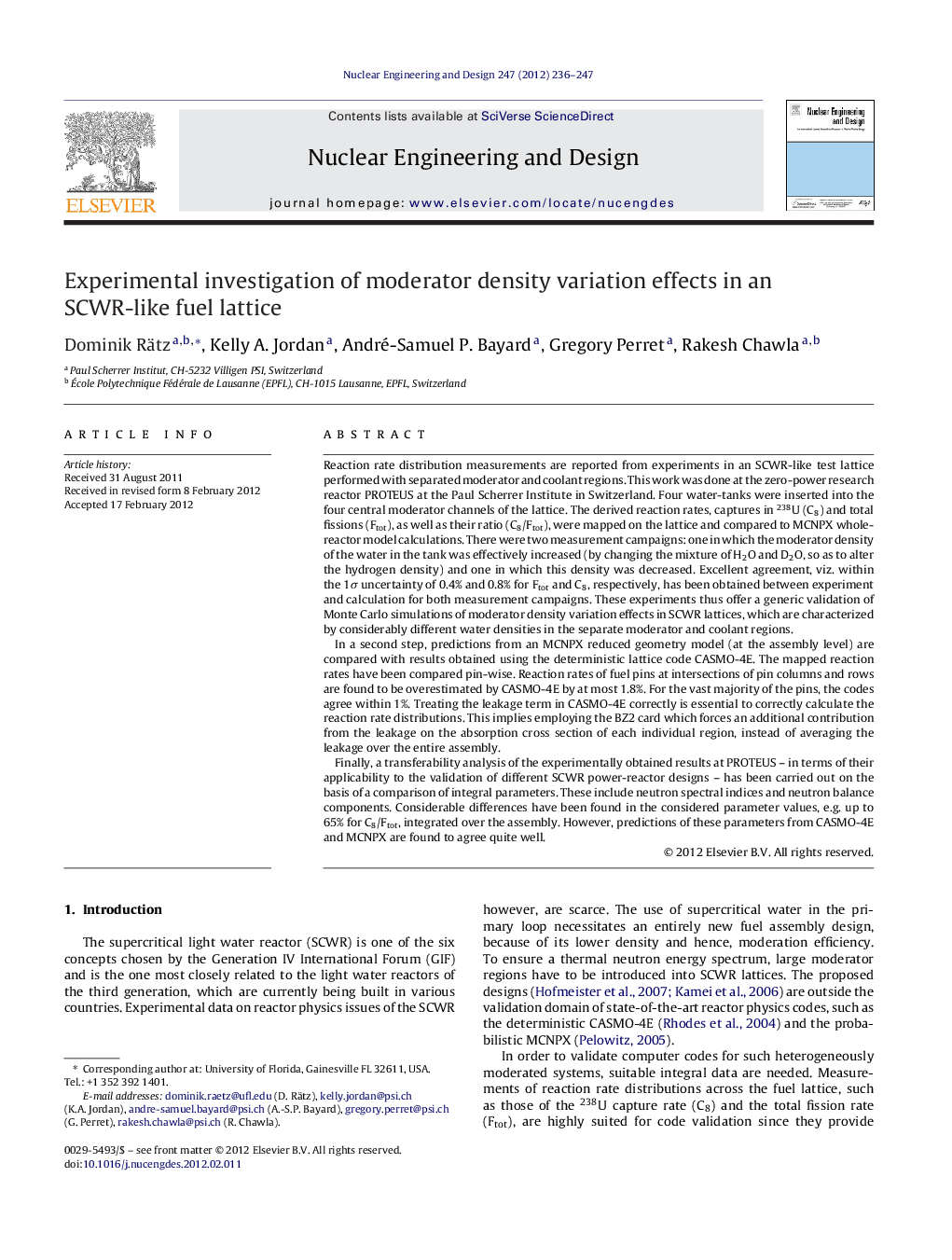| کد مقاله | کد نشریه | سال انتشار | مقاله انگلیسی | نسخه تمام متن |
|---|---|---|---|---|
| 297300 | 511753 | 2012 | 12 صفحه PDF | دانلود رایگان |

Reaction rate distribution measurements are reported from experiments in an SCWR-like test lattice performed with separated moderator and coolant regions. This work was done at the zero-power research reactor PROTEUS at the Paul Scherrer Institute in Switzerland. Four water-tanks were inserted into the four central moderator channels of the lattice. The derived reaction rates, captures in 238U (C8) and total fissions (Ftot), as well as their ratio (C8/Ftot), were mapped on the lattice and compared to MCNPX whole-reactor model calculations. There were two measurement campaigns: one in which the moderator density of the water in the tank was effectively increased (by changing the mixture of H2O and D2O, so as to alter the hydrogen density) and one in which this density was decreased. Excellent agreement, viz. within the 1σ uncertainty of 0.4% and 0.8% for Ftot and C8, respectively, has been obtained between experiment and calculation for both measurement campaigns. These experiments thus offer a generic validation of Monte Carlo simulations of moderator density variation effects in SCWR lattices, which are characterized by considerably different water densities in the separate moderator and coolant regions.In a second step, predictions from an MCNPX reduced geometry model (at the assembly level) are compared with results obtained using the deterministic lattice code CASMO-4E. The mapped reaction rates have been compared pin-wise. Reaction rates of fuel pins at intersections of pin columns and rows are found to be overestimated by CASMO-4E by at most 1.8%. For the vast majority of the pins, the codes agree within 1%. Treating the leakage term in CASMO-4E correctly is essential to correctly calculate the reaction rate distributions. This implies employing the BZ2 card which forces an additional contribution from the leakage on the absorption cross section of each individual region, instead of averaging the leakage over the entire assembly.Finally, a transferability analysis of the experimentally obtained results at PROTEUS – in terms of their applicability to the validation of different SCWR power-reactor designs – has been carried out on the basis of a comparison of integral parameters. These include neutron spectral indices and neutron balance components. Considerable differences have been found in the considered parameter values, e.g. up to 65% for C8/Ftot, integrated over the assembly. However, predictions of these parameters from CASMO-4E and MCNPX are found to agree quite well.
► Reaction rate distributions in SCWR-like lattices were calculated and measured.
► Experiments agree well with calculations using the probabilistic MCNPX.
► The deterministic code CASMO-4E generally agrees with MCNPX.
► Transferability to the validation of other SCWR designs has been carried out.
► Considerable differences have been found by MCNPX and CASMO-4E.
Journal: Nuclear Engineering and Design - Volume 247, June 2012, Pages 236–247